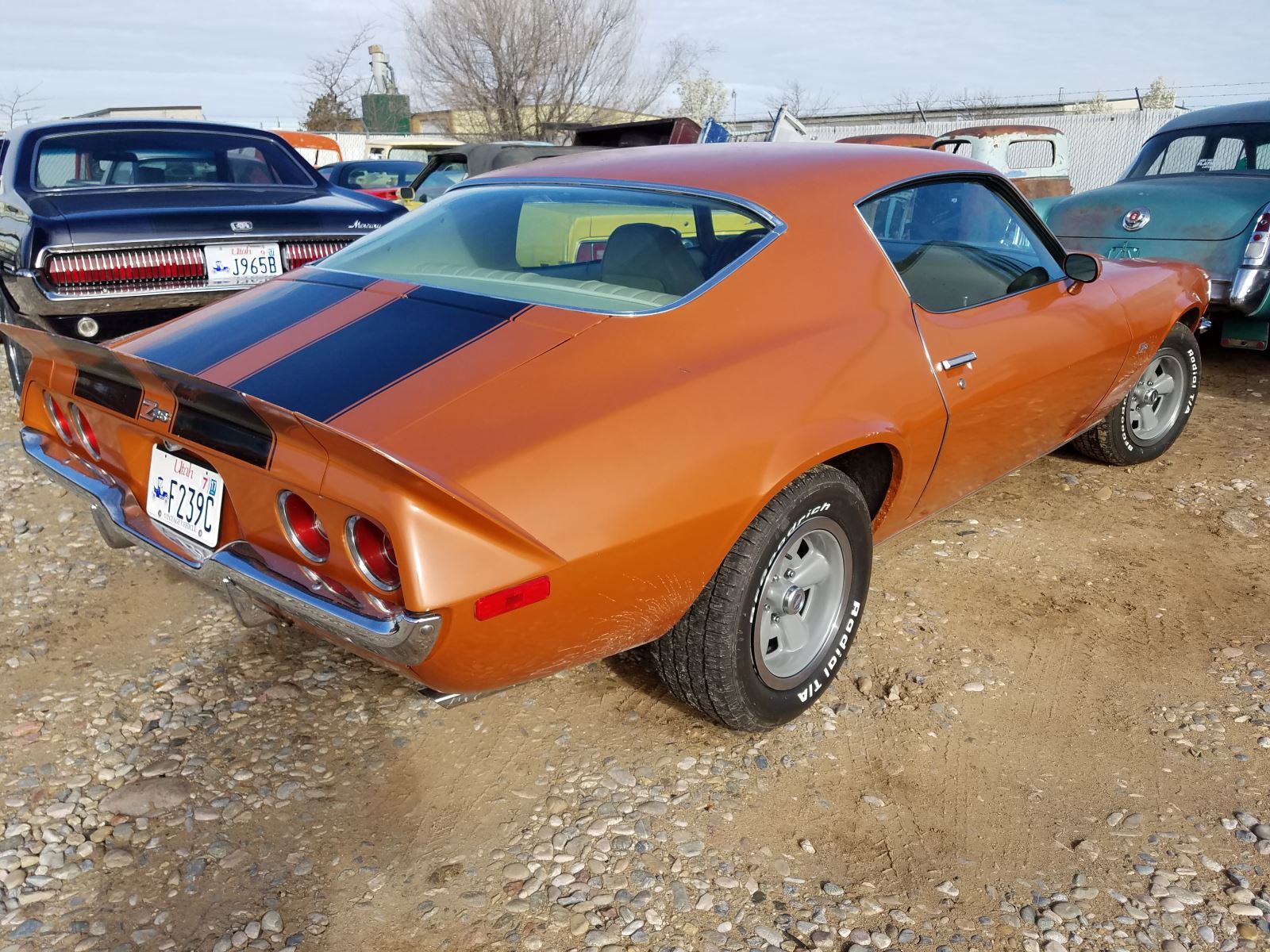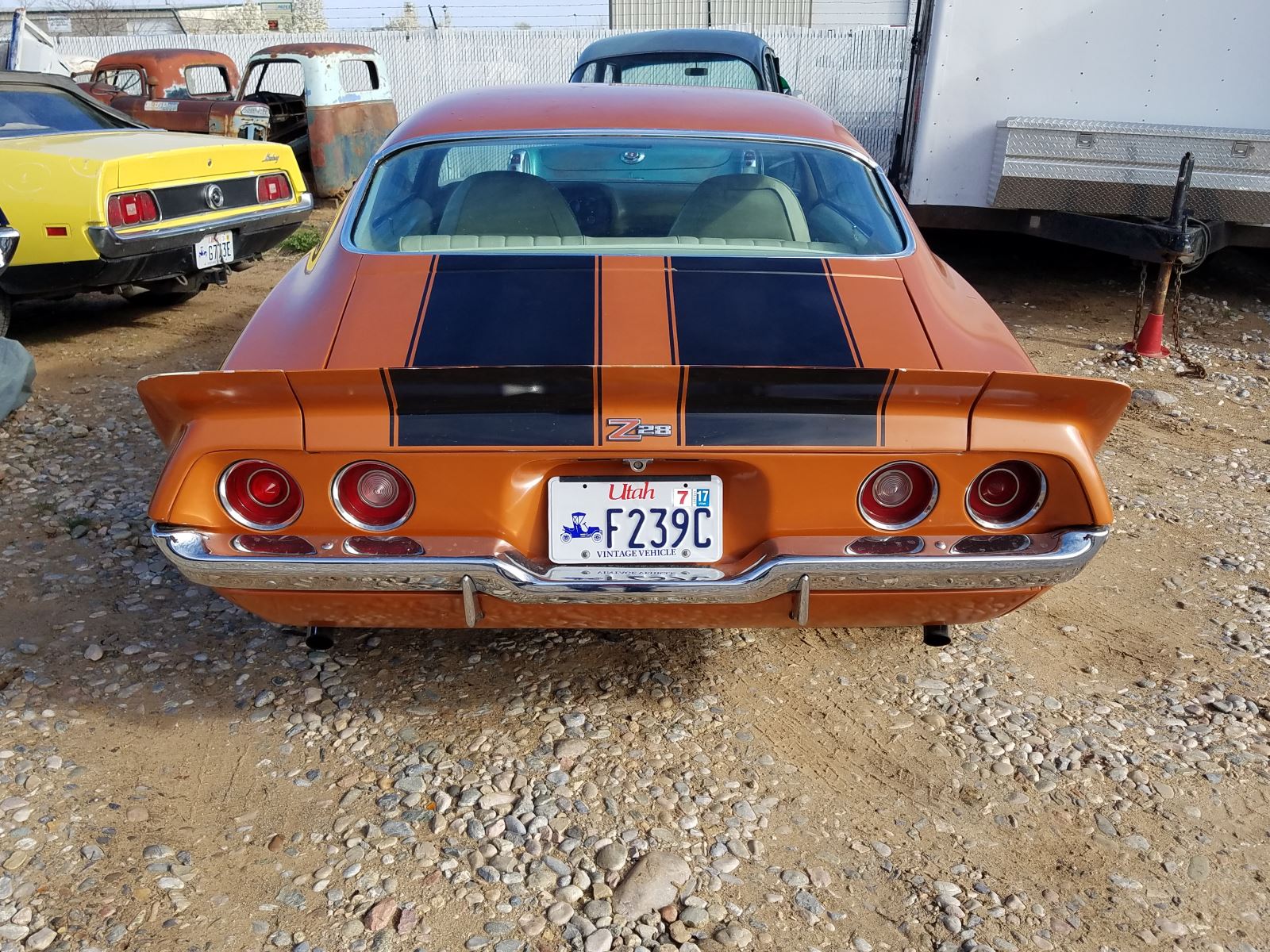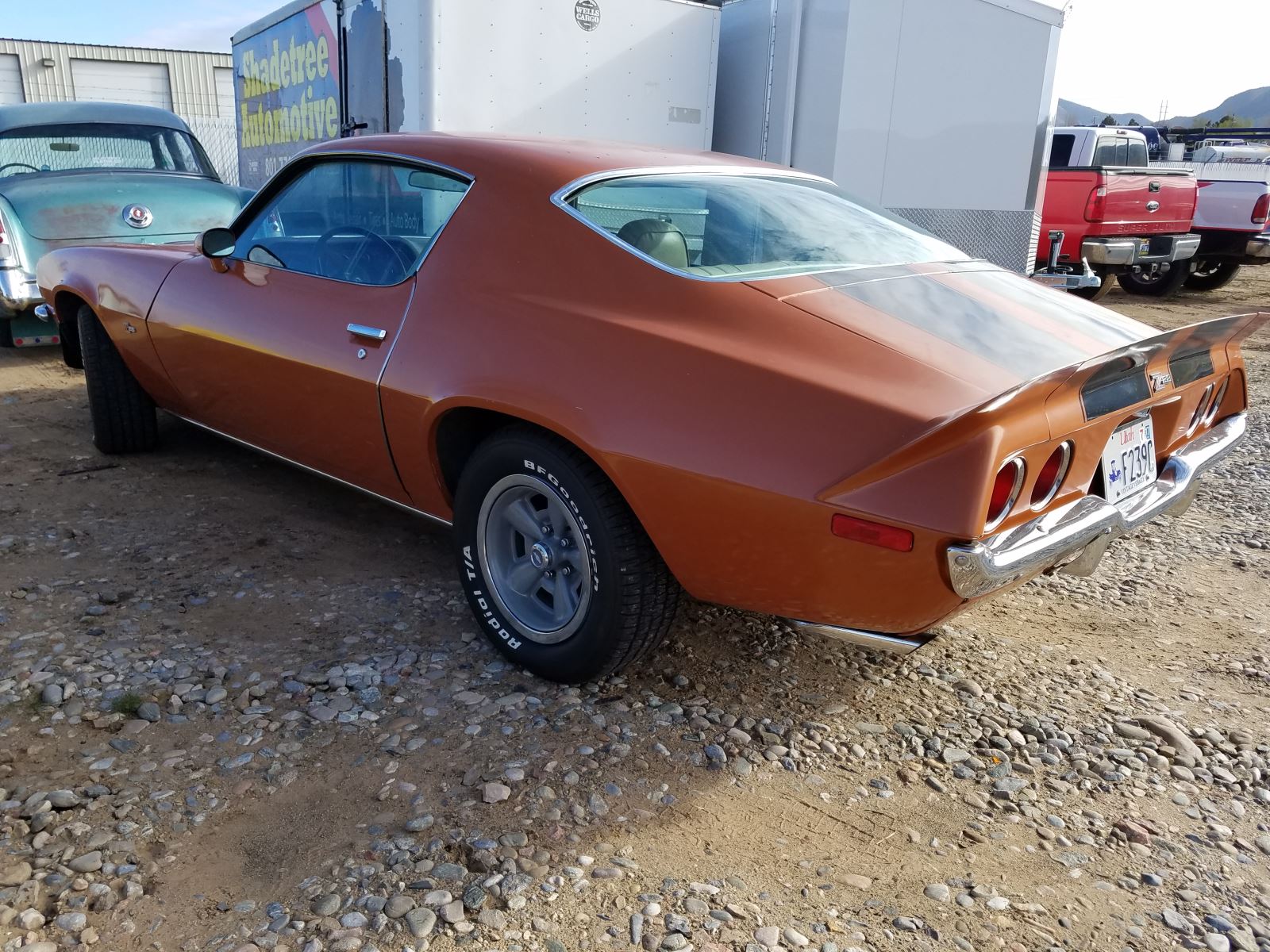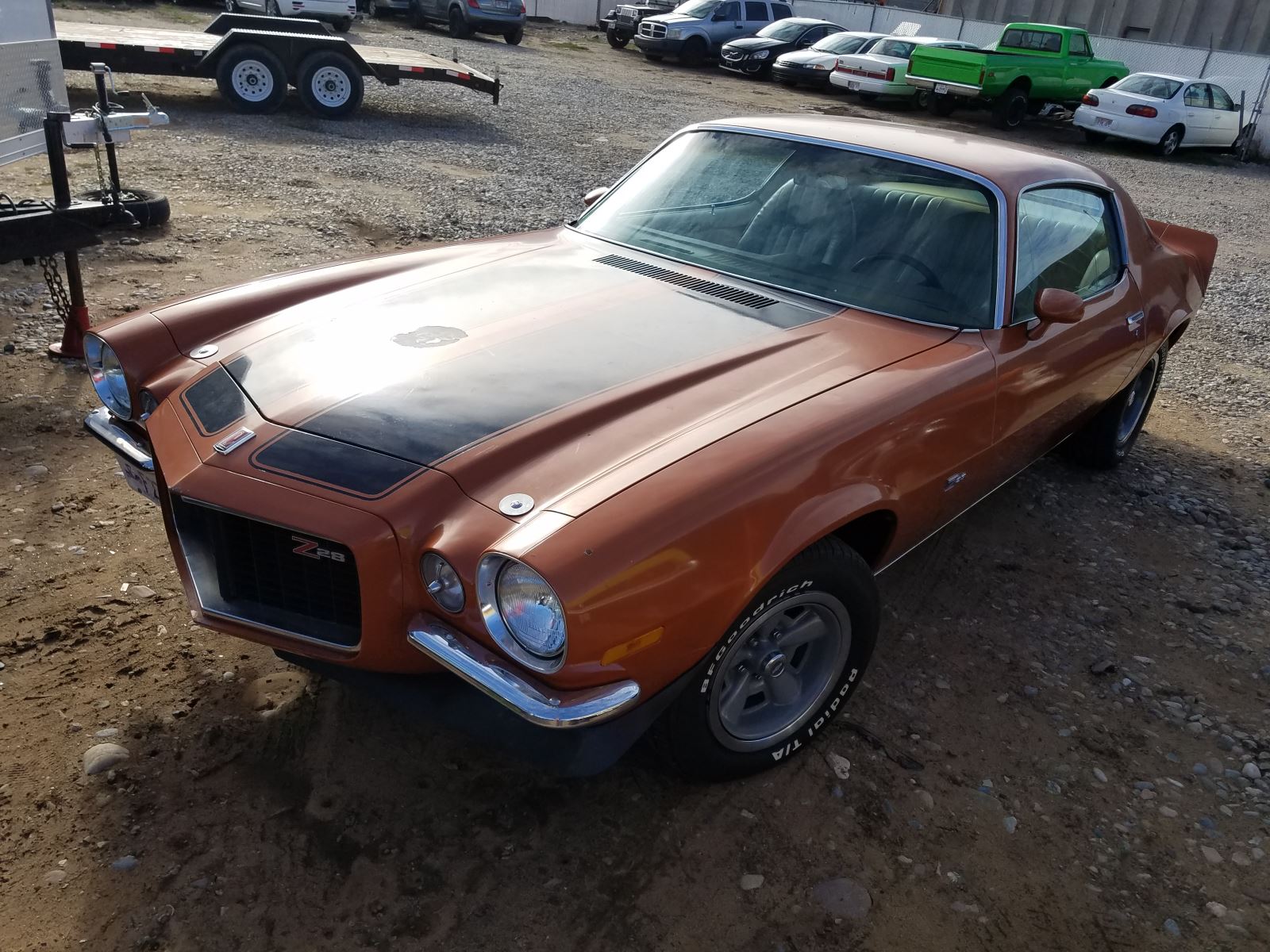The second generation Camaro was produced by Chevrolet from 1970 through the 1981. It was introduced in the spring of 1970. It was longer, lower, and wider than the first generation Camaro. A convertible body-type was no longer available. GM engineers have said the second generation is much more of "A Driver's Car" than its predecessor.
The 1971 Camaro received only minor appearance changes from its 1970 counterpart. Inside, new high-back Strato bucket seats with built-in headrests replaced the 1970-only low-back seats with adjustable headrests. The biggest changes came under the hood, due to a GM-corporate mandate all engines be designed to run on lower-octane regular-leaded, low-lead, or unleaded gasoline, necessitating reductions in compression ratios and horsepower ratings. The 250 cu in (4.1 L) straight-6, 307 cu in (5.0 L) V8, and two-barrel 350 cu in (5.7 L) V8 were virtually unchanged, as they were low-compression regular-fuel engines in 1970 and previous years.
The LT-1 350 V8 used in the Z/28 dropped from 360 hp SAE gross to 330 horsepower gross due to a compression ratio decrease from 11.0:1 to 10.3:1. The 350 c.i. engine in the 1971 Camaro Z28 produced 275 horsepower net. The 396 (402 c.i.) V8 dropped from 350 to 300 horsepower gross due to compression ratio drop from 10.25:1 to 8.5:1. The 402 c.i. engine in the 1971 Camaro SS 396 produced 260 horsepower net.



